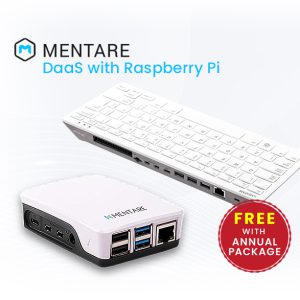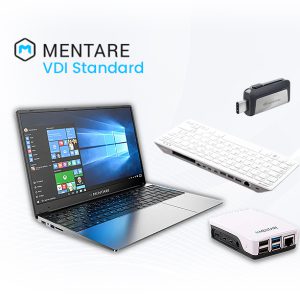Virtual Desktop
VDI and DaaS: Viable Choices for Endpoint Management
When IT teams explore optimal ways to deploy and oversee desktops and endpoints, PC as a Service (VDI) emerges as a robust option, complementing or replacing desktop virtualization solutions. Organizations seeking to convert endpoint expenses into operating expenses, break free from device refresh cycles, streamline management, and embrace consumption-based pricing frequently turn to desktop virtualization.
While Desktop as a Service (DaaS) is a prevalent choice in today’s landscape, any desktop virtualization in the past two decades has consistently proven its worth in these critical areas. As a leading VDI solutions provider, understanding the nuanced benefits of VDI and DaaS solutions and their role in enhancing endpoint management is crucial for IT teams navigating the ever-evolving technological terrain.
VDI Workspace Comparison: DaaS vs. SaaS
DaaS and SaaS share some commonalities, but their distinctions outweigh their similarities. In essence, while Desktop as a Service (DaaS) concentrates on providing a desktop environment, Software as a Service (SaaS) centers around delivering applications.
When organizations deploy DaaS and SaaS for their users, it sets the stage for a synergistic approach to IT management responsibilities. Both DaaS and SaaS bring comparable advantages in the following aspects:
- Both solutions offer the advantages of virtualization without the need for extensive back-end efforts.
- Whether for the initial setup or adjusting to fluctuations in workforce size, both VDI Workspace and SaaS demonstrate high scalability.
- IT departments can seamlessly deliver either of these services to users through user-friendly, browser-based portals.
Consolidating all essential business resources within a unified browser portal allows IT to streamline operations by minimizing unnecessary applications on desktops. This approach also reinforces data security measures, ensuring business files and data remain exclusively accessible within approved platforms. However, deploying both services through a browser may not be the preferred strategy for an organization.
Is it feasible for DaaS and SaaS to collaborate?
Indeed, DaaS and SaaS can coexist to provide desktops, applications, and additional services, offering a harmonious integration in specific scenarios.
Examples of environments incorporating DaaS and SaaS encompass:
- A traditional desktop OS alongside SaaS applications.
- A virtual desktop through DaaS coupled with SaaS applications.
- A virtual desktop facilitated by DaaS featuring applications hosted by the organization itself, possibly using methods like application layering.
VDI and DaaS: A Strategy for Your Success?
There are alternative approaches to achieving these objectives, and one noteworthy data point from our research revolves around PC as a Service (VDI).
In the 2022 “End-user Computing Trends” survey by TechTarget’s Enterprise Strategy Group, VDI is defined as “an all-encompassing solution inclusive of endpoint hardware, lifecycle services, and support, and a payment model aligned to per-user per-month pricing.” Astonishingly, 98% of respondents deemed it strategic. Why is VDI not a constant topic of discussion despite such high interest?
One reason might be the initial misconception that VDI is synonymous with PC leasing, the initial method for shifting endpoint costs from Capex to Opex. However, the resemblance ends there. Unlike leasing, virtual desktop goes beyond being an alternative procurement method. It incorporates management and lifecycle services and a real-world version of demand-based subscription pricing, all bundled in a monthly cost per device with variable term
Over the next 12 months, the perceived strategic importance of VDI, seen as an all-encompassing solution with endpoint hardware, lifecycle services, and support, aligned with per-user, per-month pricing, is as follows:
- 40% consider it very strategic.
- 49% consider it strategic.
- 9% consider it somewhat strategic.
- 1% consider it not at all strategic.
- 1% need to be made aware of its strategic relevance.
Another factor contributing to the need for more discussion could be the terminology. While major vendors like Dell, HP, and Lenovo offer similar services, only Dell uses the term PC as a Service. HP and Lenovo prefer the term Device as a Service (DaaS), which quickly leads to confusion with both Desktop as a Service and Data as a Service. The similarity in concept and meaning between Device as a Service and Desktop as a Service, coupled with overlapping buying teams, could result in organizations using both services — and perhaps even Data as a Service!
Unpacking the Benefits of VDI
- Business as Usual: One of the critical advantages of VDI is its ability to provide organizations with a familiar approach to endpoint management. No matter how many virtual desktops are deployed, they will always represent a fraction of the endpoint devices in use. VDI solutions enable organizations to continue deploying traditional desktops and laptops, ensuring a smooth transition to a modern operational model without significant disruptions.
- Complementary to Virtualization: VDI and virtualization, particularly Desktop as a Service (DaaS), are not mutually exclusive. Users still require endpoints to access virtual desktops in a complete DaaS environment. Adopting a VDI-like endpoint strategy complements virtualization efforts, offering a modern, service-oriented model that enhances overall efficiency.
- Similar Benefits to Desktop Virtualization: While organizations may be familiar with the benefits of desktop virtualization, such as DaaS, the transition to such models is not trivial. Implementing desktop virtualization often involves significant changes to established workflows, presenting a considerable challenge. VDI, however, offers a pragmatic alternative for organizations seeking to shift costs to consumption-based Opex, lighten the load on management and procurement teams, and do so with minimal disruption to existing procedures.
STANDARDIZING ON VDI FOR CLARITY WITH MENTARE
In a landscape where terminology can be confusing, standardizing on VDI becomes a clarion call for simplicity. By adopting a standardized approach, organizations can ensure that the benefits and nuances of VDI are communicated effectively without confusion. The clarity brought about by such standardization empowers In the journey towards a more efficient and seamless workspace management model, Mentare stands as a trusted partner. The commitment to excellence, coupled with a customer-centric approach, positions Mentare as a catalyst for organizations aiming to leverage the power of VDI. As businesses navigate the diverse terminologies and choices in the IT landscape, Mentare provides clarity, guiding organizations toward a future where workspaces are both efficient and transformative.
Conclusion
Virtual desktop cloud emerges as a strategic ally for organizations seeking to optimize costs, enhance management efficiency, and ensure business continuity in the digital transformation era. By standardizing VDI, businesses can cut through the complexities of industry terminology and harness a solution that aligns seamlessly with their operational objectives. Mentare, with its unwavering commitment to excellence, serves as a bridge to this future, where workspaces are not just spaces but dynamic environments that drive innovation and success. Embrace the power of Virtual Desktop Infrastructure VDI with Mentare and embark on a transformative journey into the future of workspace management.







